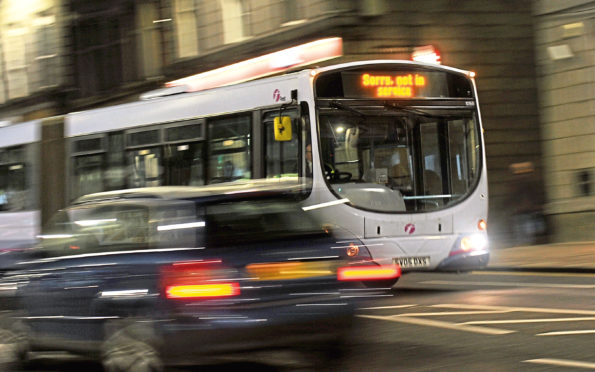Cars could be banned from several streets, new 20mph zones introduced and another bridge built across the River Dee under proposals to shake up transport in Aberdeen over the next 20 years.
An ambitious package of measures has been devised by a team of council specialists who were tasked with finding ways of reducing gridlock and pollution in the city centre.
The proposals include closing most of Union Street to all traffic other than bicycles and buses, and building a new pedestrian bridge at North Esplanade West.
A mass investment to promote cycling is suggested, with segregated cycle lanes envisioned for the likes of Union Street and King Street.
Officers have also recommended that Broad Street-style pedestrianisation – with access only allowed to buses and bicycles – should be investigated on a slew of city streets including between Castlegate and Bridge Street on Union Street.
Guild Street, Market Street, Union Terrace, Schoolhill, Upperkirkgate, Gallowgate, Golden Square and Langstane Place could also become no-go zones for cars.
And the speed limit could be slashed to 20mph on Bridge Street, Rosemount Viaduct and Victoria Road.
The report, to be presented to the council’s city growth committee next week, comes after major retailers called for the partial-pedestrianisation of the Granite Mile to save the beleaguered shopping industry.
Chiefs from the Bon Accord Centre, Marks and Spencer, John Lewis and Debenhams want cars banned on the stretch of Union Street from Market Street to Bridge Street.
The report says that there will be heavy costs associated with the projects should they be progressed.
The partial pedestrianisation of Broad Street, which was completed in 2017, cost £3.2 million alone.
Officers have explained that the proposals would complement recent efforts to decrease traffic in the heart of Aberdeen.
The report states: “Recent years have seen the successful completion and opening of the Diamond Bridge, Dyce Drive link road, Craibstone park and ride and, most significantly, the AWPR.
“This transformation will continue over the coming years with the delivery of Berryden Corridor, South College Street and Haudagain Roundabout improvements.
“Investment in the transport system, therefore, is in a healthy state and the time is prudent to consider where Aberdeen’s future priorities should lie.
“If these opportunities are not grasped the likelihood is that traffic will grow to fill the space that has been created, resulting in continued congestion, potentially worsening air quality and rising carbon dioxide emissions.”
Council operations convener, John Wheeler, said: “It is important to realise that we can’t just stand still.
“There will have to be change if we are to capitalise on the likes of the AWPR and I think we need to look into the future.”
Opposition Liberal Democrat infrastructure spokesman, Steve Delaney, said his group was positive about the 20mph zones – but would not support “partial” pedestrianisation in the city.
He said: “It’s our view that either you pedestrianise a street or you don’t, there are a lot of problems with the buses and bicycles approach.
“Certainly pedestrianisation is something we would broadly like to see but we would need to see the detailed case for each street first.”
Adrian Watson, chief executive of Aberdeen Inspired, said: “It is clear from many of our retailers there is a real desire to push forward with partial pedestrianisation of a stretch of Union Street.
“These retailers have been encouraged by the positive effect that the now pedestrian-friendly Broad Street has brought to our city centre.”
